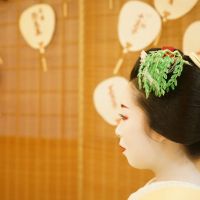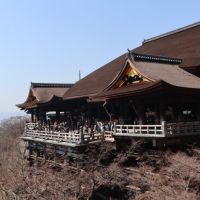Shinkansen or flight or bus? The easiest way from Tokyo to Kyoto
Masaya Osada
Latest posts by Masaya Osada (see all)
Since the opening in 1964, Shinkansen (bullet trains) has connected Japan’s most of the major cities. Shinkansen is the symbol of Japan’s economic miracle after World War 2, and famous for punctuality, comfort, safety (no fatal accidents in its history) and efficiency. However, you might be a little bit confused how to take Shinkansen. Don’t worry, I promise this article will help you a lot.
Contents
Network of Shinkansen
The shinkansen network consists of multiple lines, among which the Tokaido Line (Tokyo – Nagoya – Kyoto – Osaka, blue icons) is the oldest and most popular.
How to buy Shinkansen Tickets
1. Go to Shinkansen ticket counter
The easiest way is to visit a ticket office of all major JR stations across Japan. Any shinkansen can be reserved from any JR ticket office in Japan. The staffs speak English so you won’t have any problem. Cash and credit cards are accepted.
2. Choose the type of Shinkansen
There are three train types of Shinkansen. Nozomi is the fastest train and, costs at least 13,080 yen one-way from Tokyo to Kyoto. Hikari, which is slightly slower and cheaper than Nozomi. Kodama is the slowest, but the same price as Hikari. Price could be slightly changeable according to the high demand especially in peak seasons such as April, May, August, November, and Newyear Period. Please pay extra attention to the fact that Japan Rail Pass is usable only for Hikari and Kodama.
| Time | Stops | Fare (JPY) | Japan Rail Pass | |
| Nozomi | 2hr20min |
Tokyo→Shinagawa→ |
Green 18,690 |
✖️ |
| Hikari | 2hr40 | Shinagawa→ Shin-Yokohama→Nagoya + more depends on the train |
Green 18,380 Reserved 13,600 Ordinary 13,080 |
◯ |
| Kodama | 4hr30min | Every stops til Kyoto |
Reserved 13,600 Ordinary 13,080 |
○ |
3. Seat Classes
Similar to an airplane, Shinkansen also offers two classes, which are typically found in separate cars.
-Ordinary seat
As you can guess from the name, ordinary seats are the basic seats found on all Shinkansen trains. Generally speaking, ordinary seats would be enough for most tourists to enjoy comfort and foot space.
-Green Car
Comparable to business class on airplanes, green cars offer seats that are larger and more comfortable than ordinary seats and offer more foot space.
4. Select reserved or non-reserved cars
You can choose reserves or non-reserved cars depending on your schedule. If you are going to use Shinkansen during busy hour (7 am-10 am, 5 pm-9 pm ) and peak season (April, May, August, November, Newyear Period), the reserved seat is strongly encouraged because you might have to keep standing over 2 hours on Shinkansen.
5. Access your platform
Pass through the ticket gate and follow the bilingual signboards to the shinkansen platforms. (Japan Rail Pass holders cannot use the automatic gates but have to show their pass to the staff at the manned gate.) The electronic displays will guide you from which platform your Shinkansen will depart. Then carefully find your car, and just wait for the arrival of the train.
Facilities & Services on Shinkansen
Toilet
Since your journey on Shinkansen is long, there are many toilets. The instruction written on the table in front of your seat indicates the map of Shinkansen.
Food and drinks
Some staffs periodically pass along the aisle and sell food and beverages though it is a little more expensive than the usual supermarket.
Smoking
Smoking is strictly prohibited on Shinkansen except for the designated smoking room.
Wi-Fi
Although Wi-Fi is provided between Tokyo and Osaka station, you have to pay and register in advance on Japanese website so you shouldn’t expect free Wi-Fi on Shinkansen.
Electronic power outlets
For Nozomi and Hikari, power outlets are on every window side seat and front and end rows of each car.
Luggage space
There is usually space for two or three large suitcases behind the last row of seats in each car. For backpacks, you can leave above you. However, please keep considerate to other passengers to make your trip pleasant.
Manners
1. You can have a conversation but keep your voice tone down.
2. You are allowed to bring and eat food on Shinkansen, but don’t bring something smells so bad.
3. Set your mobile phone to silent mode. You can talk on a phone in the deck connecting each car.
4. Don’t block the aisle with luggage.
5. Recline your seat with consideration for the person behind you. Return the seat to its original position before leaving the train.
Flight vs Shinkansen
Kyoto doesn’t have an airport, so to access Kyoto, you will have to take extra train or bus from Kansai Airport (mainly for the international trip) or Itami Airport (primarily for domestic flight).
Both airports are situated in Osaka, but they are very far from Kyoto. In that sense, we encourage you to choose Shinkansen unless you hope to explore Osaka before Kyoto or leave Japan from Kansai Airport. Although some low fare careers such as Peach, Jetstar connect Naria Airpot and Kansai Airport at the lower price than Shinkansen, you should consider extra cost for luggage and transportation fare to get the airport.
Bus vs Shinkansen
Bus terminal at Kyoto station
The cheapest way is overnight buses, taking 7 hours (subject to change according to the traffic situation) from Tokyo to Kyoto. Thanks to harsh competition among many bus companies, the price starts from 2,000 JPY to 12,000 JPY depending on comfort and season. If you are confident in your stamina, taking an overnight bus is also a possible option.
I hope you this article helps you to decide on which transportation to choose to go to Kyoto from Tokyo. Of course, it’s entirely up to your budget and schedule. Personally, I recommend Shinkansen because it is comfortable and fast!
Traveling from Tokyo to Kyoto presents various options, each offering a unique journey. Upon reaching Kyoto, enrich your visit with the “Hochoshiki Knife ceremony,” an immersive experience showcasing the art of Japanese knife-making, linking your travel choices with cultural exploration.
https://www.hochoshiki-knifeceremony.com/

A sacred place for Japanese food, a treasure house of ingredients, Minami-Boso Takaya Shrine Kitchen knife ceremony "Ryumon-no-Koi" long story: edited by Minamiboso City Tourism Association Channel



